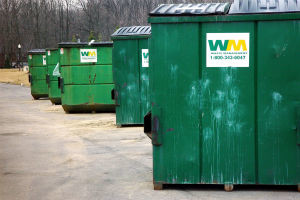The U.S. House of Representatives recently passed the Brownfields Enhancement, Economic Redevelopment, and Reauthorization Act of 2017 (H.R. 3017). The legislation reauthorizes the U.S. Environmental Protection Agency’s (EPA) Brownfields Program.

Basics of EPA’s Brownfield Program
There are currently more than 450,000 brownfield sites in the United States. The term “brownfield site” refers to real property, the expansion, redevelopment, or reuse of which may be complicated by the presence or potential presence of a hazardous substance, pollutant, or contaminant.
First created in 1995, the goal of the EPA’s Brownfields Program is to empower states, communities, and other stakeholders in economic redevelopment to work together in a timely manner to prevent, assess, safely clean up, and sustainably reuse brownfields. The EPA fosters such activities by providing grant funding, technical assistance, and training.
Started as a pilot program that provided seed grants to local governments, the 2002 Small Business Liability Relief and Brownfields Revitalization Act (the Brownfields Law) codified many of EPA’s practices, policies and guidance. The Brownfields Program expired in 2006 but has since been funded each year by Congress.
Legislation Reauthorizing Brownfields Program
The Brownfields Enhancement, Economic Redevelopment, and Reauthorization Act of 2017 reflects negotiations by the House Energy and Commerce and Transportation and Infrastructure Committees to reconcile two previously passed brownfield reauthorization bills (H.R. 3017/H.R. 1758). The good news for local governments is that the final bill includes additional liability protection for state and local governments.
Currently, the Comprehensive Environmental Response, Compensation, and Liability Act of 1980 (CERCLA) provides liability protection for local governments if they acquire brownfields involuntarily. However, they must satisfy a separate set of standards if the brownfields are acquired voluntarily. The final version of H.R. 3017 amends CERCLA to provide liability protection to local governments for both involuntarily and voluntarily acquired brownfields.
The Brownfields Enhancement, Economic Redevelopment, and Reauthorization Act of 2017 also raises the cap on funding for brownfields cleanup grants from $200,000 to $500,000 per site. It also establishes a multipurpose brownfields grant program that would allow eligible entities to undertake multiple brownfield projects under one grant.
The bill is now under consideration by the U.S. Senate, where a similar bill, the Brownfields Utilization, Investment and Local Development Act (S. 822), is currently pending. We will continue to track the status of the legislation and provide updates as they become available.
For more information about the Brownfields Enhancement, Economic Redevelopment, and Reauthorization Act of 2017, we encourage you to contact a member of Scarinci Hollenbeck’s Government Law Group.
